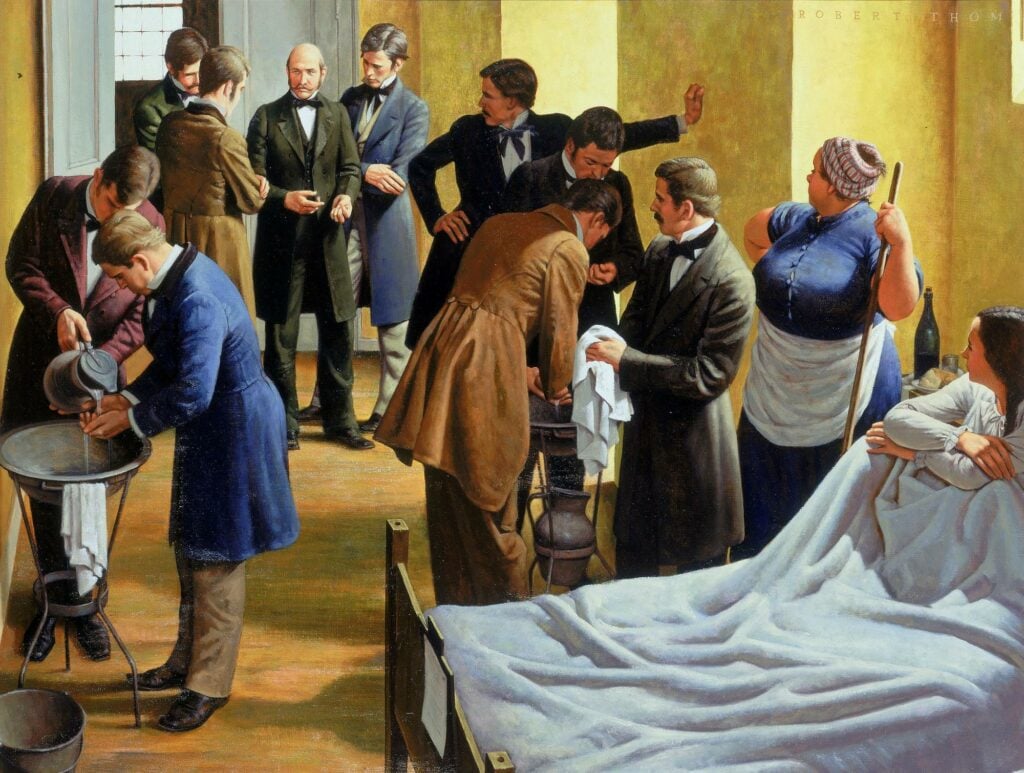The findings of physicians Oliver Wendell Holmes and Ignaz Philip Semmelweiss emphasized the need for cleanliness to decrease postpartum infections. The pair were faced with questioning and rejection from many esteemed medical practitioners. But were they right?
Despite the studies done by Oliver Holmes and Ignaz Semmelweiss, the general disbelief of physicians to the significance of cleanliness to avoid childbed fever led to the continuous increase of maternal deaths.
The Puerperal Fever
Puerperal Fever, defined as a fever spanning for more than a day during the ten days after the day a woman has given birth, is most commonly caused by an infection on the uterus’ placental site.
Puerperal fever takes on many names, such as childbirth fever, childbed fever, and postpartum fever. The Puerperal Fever’s linguistic background originates from the Latin language. Puer in Latin means child, and parere means giving birth. The term puerpera then translates to a woman in childbirth. The puerperium denotes the time after the baby’s delivery.
The puerperal fever is most commonly associated with Oliver Wendell Holmes Sr. and Ignaz Philip Semmelweiss due to their contributions in identifying the cause of puerperal fever and its manner of spreading. (Source: Medicine Net)
The Significance of Cleanliness
The incidence of puerperal fever during the 1800s in Europe had become widespread as its presence was prevalent in most maternal deaths. In 1842, Physician Oliver Wendell Holmes began to research puerperal fever by studying case reports and other forms of medical literature.
Oliver Holmes published a paper on puerperal fever in 1843 entitled The Contagiousness of Puerperal Fever as part of the New England Quarterly Journal of Medicine and Surgery. Within this essay, Holmes emphasizes that birth attendants, such as physicians and midwives, act as carriers of bacteria that harm the patients by exposing them to the disease. (Source: The Embryo Project Encyclopedia)
Holmes’ work is one of the few that first proposed the idea that puerperal fever is contagious, stating the necessity of protective measures to hinder the increase in puerperal fever cases. Many well-known experts mocked his arguments and belittled the significance of cleanliness in the decrease of puerperal fever.
There was no object in being clean. Indeed, cleanliness was out of place. It was considered to be finicking and affected. An executioner might as well manicure his nails before chopping off a head.
Sir Frederick Treves
(Source: Archive)
The Pioneer of Antiseptic Use
Hungarian Gynecologist Ignaz Philipp Semmelweis is known as the Savior of Mothers and the Father of Infection Control. Being the first physician to exhibit the contagiousness of puerperal fever, he demonstrated the massive decrease in puerperal fever cases in the appropriate handwashing enforcement to medical practitioners.
In 1847, Ignaz Semmelweis required attendants to handwash in chlorinated water prior to infant delivery, majorly reducing mortality rates caused by puerperal fever. (Source: Medicine Net)
Despite the lifesaving results of Semmelweis’ arguments, he was no exception to the medical establishment’s rejection of his ideas. His beliefs had yet to be accepted by his fellow physicians due to the general downplaying of disinfection practices.
With due respect for the cleanliness of the Viennese students, it seems improbable that enough infective matter of vapor could be secluded around the fingernails to kill a patient.
Carl Edvard Marius
(Source: The Ohio State University)
